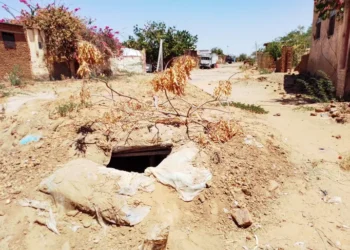On the 1st of July 2021, in collaboration with the Ministry of Finance, the Ministry of Trade & Industry and the Oil Marketing Companies (OMCs), the Petroleum Regulatory Agency (PRA) announced the latest adjustment on per litre fuel prices for Petrol, Diesel, Kerosene and Fuel Oil from Le 8,500 to Le 9,500 which represent a 12% increase.
In their notice, PRA noted that pump prices in Sierra Leone are influenced by movements in Platts and the foreign exchange rate, a sentiment that was also echoed by the Minister of Trade & Industry, Dr. Edward H. Sandy, in a meeting with transport stakeholders on the 30th June 2021, where he notified them of a potential increase in fuel prices.
However, with unassured government subsidies on pump prices and the ongoing COVID-19 situation, severe consequences are inevitably bound, especially on users of public transport.
For the government and many, the anticipation is that the increase in fuel prices would attract an insignificant increase in public fares by at most Le 500 for within city transport and Le 5,000 for interregional transport, even though in equivalent terms, the 12% increase should have translated into an increase of Le 200 for bus prices within the range of Le 1,500 – Le 2,000 and Le 400 for Le 3,000 – Le 5,000.
This, however, is not the case under a public transport system in which users are left at the mercy of providers to exploit even way before the prices changed. To me, the announcement of price increase only provides drivers and riders with an official validation for further exploitation, and it has become an easy jab to throw at passengers whenever they express surprise at certain prices.
From my experience, instead of the corresponding 12%, public fares have increased over twofold. For example, buses that operate a distance of Le 1,500 before the increase now charge Le 2,000 which represents a 25% increase in fares, while for those operating a distance with a price of Le 3,000/ 5,000 before (like buses that ply the Jui -Wilberforce or Lumley axes) have increased prices by Le 1,000 (representing a 33% increase).
Amidst all this, the halfway trick and overcharging by some taxi and bus drivers are making a bad situation worse. It is becoming a crisis in a health crisis period.
Foreseeing the potential impact on the livelihoods of people, especially the poor, the Native Consortium and Research Center (NCRC), in a protest statement, expressed concerns over the price increase in pump prices. According to them, the price increase was “not only unacceptable but untimely and will exacerbate the suffering of the poor Sierra Leonean”.
Today, this fear is being realized by the people who have to walk around with two times the normal transport when going out, for which the poor Sierra Leoneans can hardly afford. If serious and urgent action is not taken to redress the situation in the transport sector, it is obvious that the implications will be far-reaching, knowing very well the ramification that comes with an increase in fuel prices.
Not only will people experience an increase in transport fares, but, likely, the prices of other commodities will soon start to shoot up when carriage cost is incorporated.
In this regard, it is in the interest of the government and the poor Sierra Leoneans that stringent measures are put in place to save users from this involuntary extortion. The government needs not only to communicate the transport prices for key transport axes in Freetown, but it should ensure adherence by putting mechanisms in place.
In collaboration with key stakeholders, active and non-compromising monitoring agents should be located in key bus stations to reinforce the government price and ensure order because we often see passengers show blatant disregard for queues and at times self-bid a higher price.
Also, the government can provide a hotline or empower the police so that users can easily report drivers who are bent on exploitation for which serious action should be taken.
Better still, since the exploitation by drivers arise from the gap between the supply of public transport utilities and their demand, government can fill the gap by significantly investing in public transport by providing inter-city buses.
By Talatu Jalloh
Email: talatujalloh00@gmail.com
READ ALSO: International Tourist Arrivals down by 53.2%



















